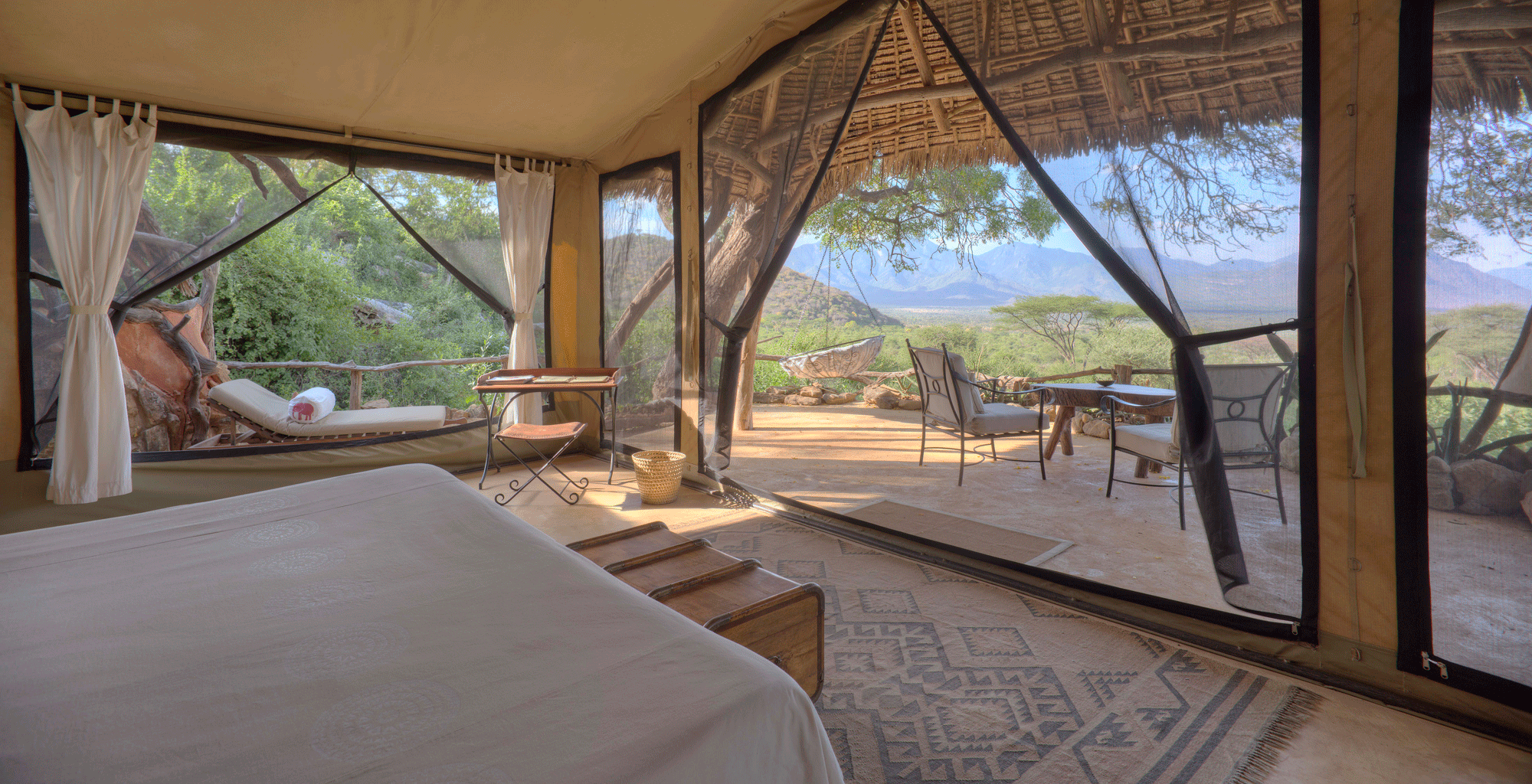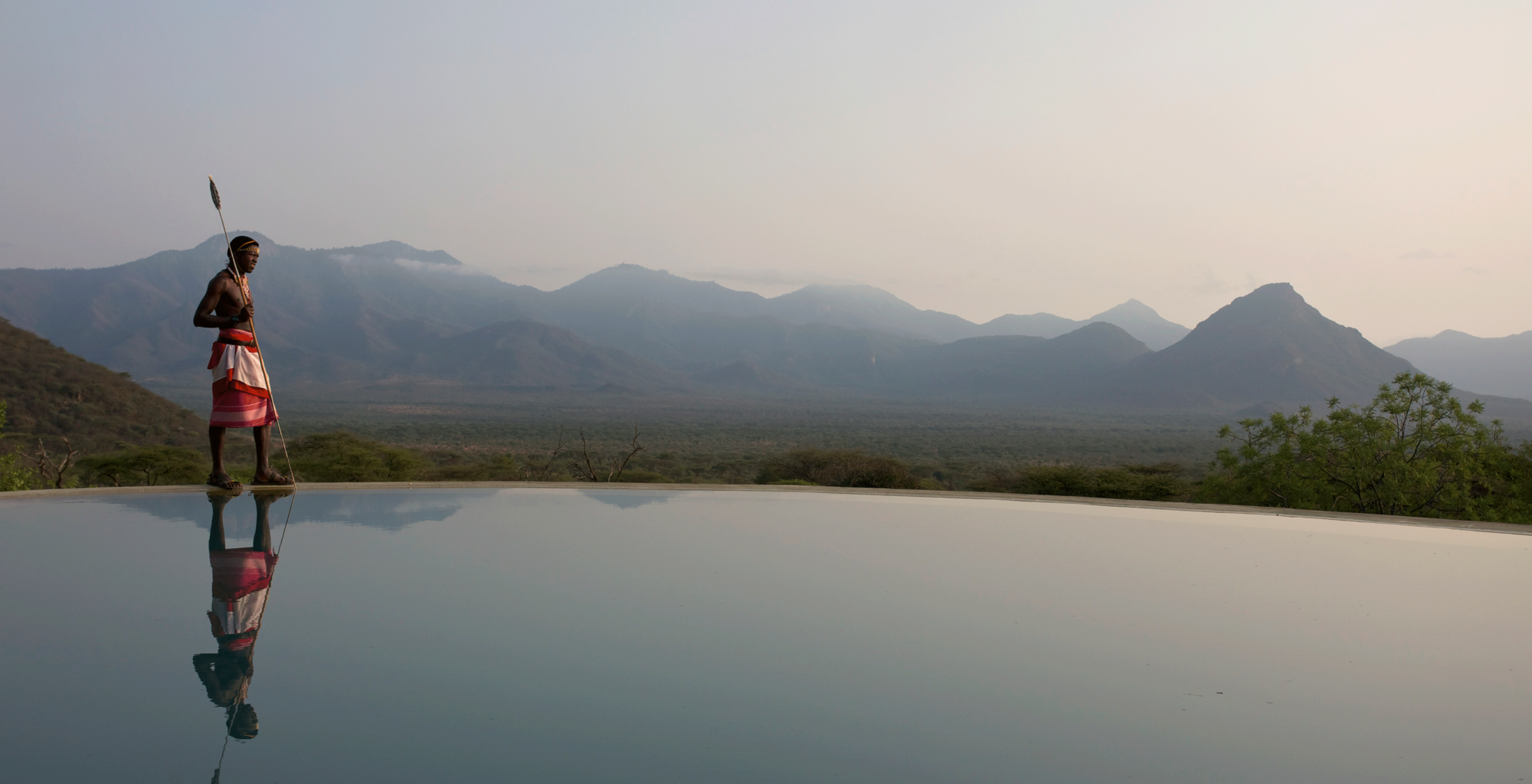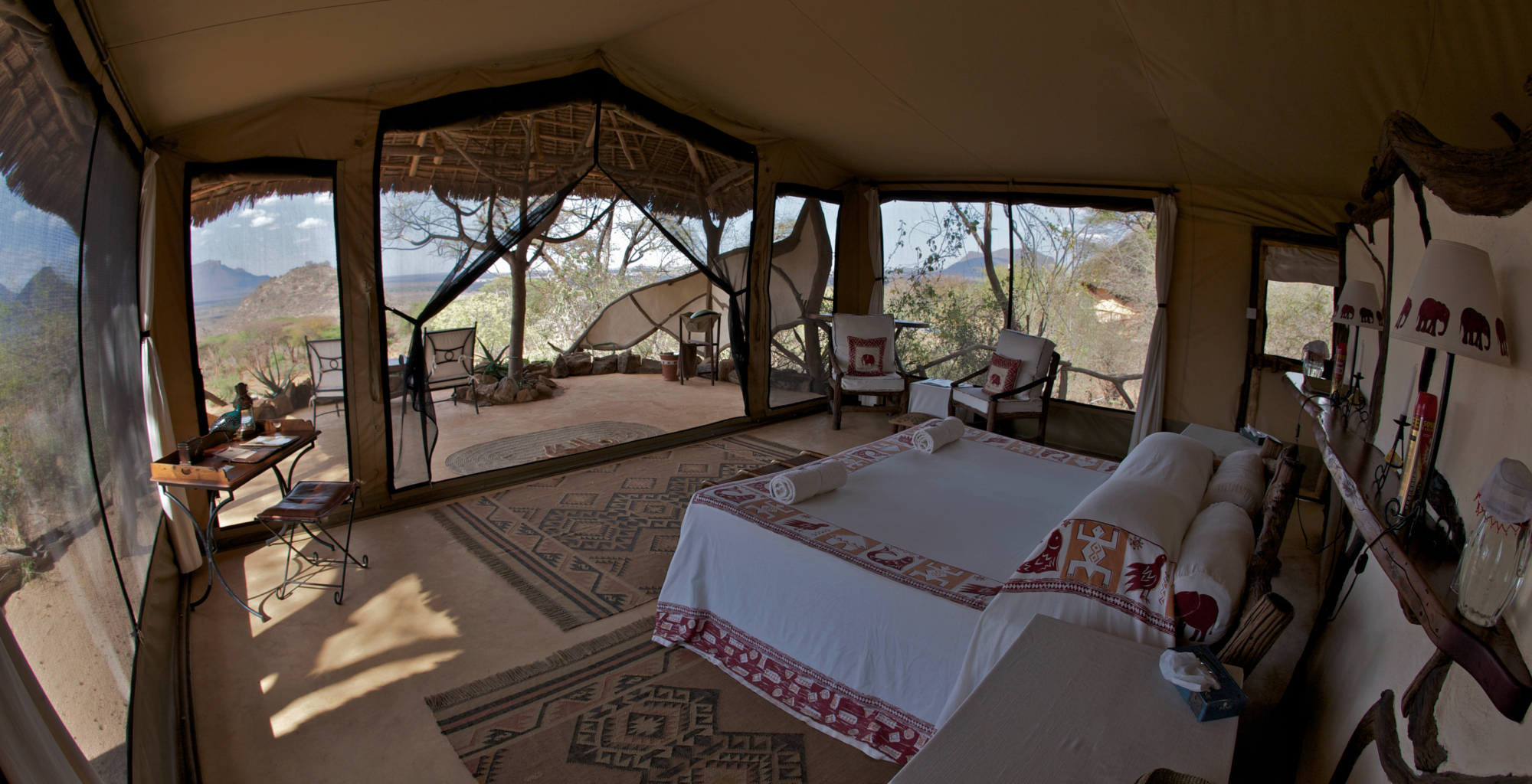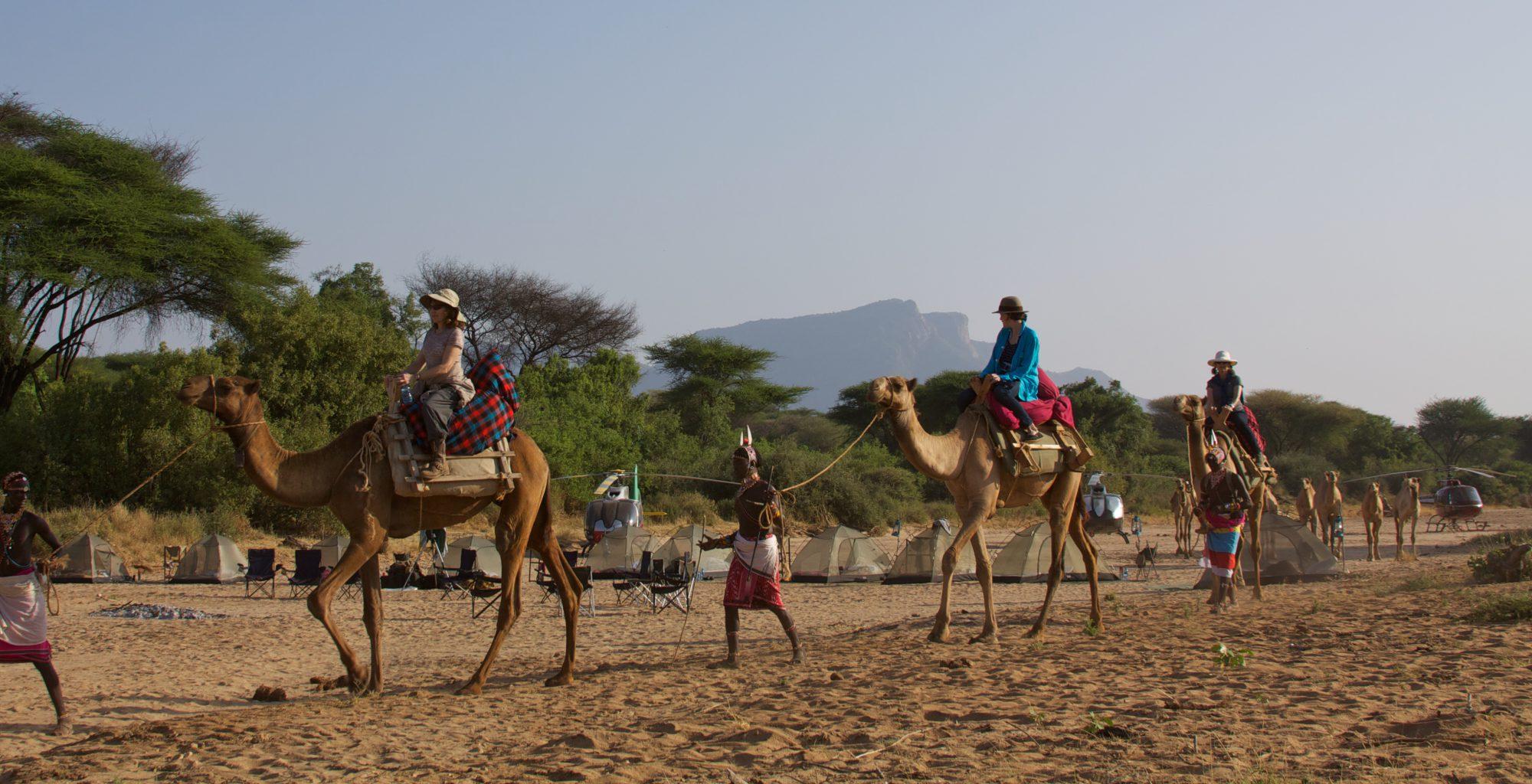For us, Sarara is one of the most exciting camps in Kenya today. Located in northern Kenya, in the southern end of the Matthews Mountains, on Namunyak, an 850,000-acre community conservancy, it is one of the leading examples of how eco-tourism and sustainable land practices can help kick-start a revival in animal populations, and so begin to regenerate the local environment.
Overview
With much of the work led by Lewa’s Ian Graig, and by the camp’s long-term and now retired managers, Piers and Hillary Bastard, the area, which in 1996 recorded no elephant, is now home to several thousand elephant, and consequently to a rich variety of animals. The knock-on effects have been unremittingly good. The local Samburu are once again re-engaged in digging singing wells (see below), in projects that directly affect their well-being, and in the daily running of Sarara. The management of the camp has been taken over by Piers’s son Jeremy and his partner Katie.

A mixed material build – canvas, wood, thatch and stone -the camp itself consists of 5 luxury tents and a main lodge. Shared areas include a seating area, dining room, bar and natural swimming pool. The main lodge is open, clear and welcoming.
Food & service
The food is delicious – we advise sampling the scrambled eggs, which are cooked to perfection – while the service is friendly and efficient.
Rooms
There are six single-bedroom sleeping tents in the family-size Sarara House at Sarara Camp. Each single tent has a private veranda, a large bedroom equipped with a loo, a basin, a changing area to the rear, and an outside shower. Hot water is brought in buckets and hoisted into the trees above. The family tent is similarly configured and serviced but comes with an extra bedroom. The whole feel of the place is one of function, and of gently tweaking nature: luxuries are to be found in the bed linen, in the beautiful throws, the colourful cushions, and in how objects – both useful and decorative – accentuate the beauty of Sarara’s immediate environment.
Activities
Activities at Sarara include wildlife drives, guided walks, cultural visits, elephant watches, donkey hikes, fly camping, bush picnics and forest treks.
Singing Wells: The practice of digging singing wells in the dry river beds to water their cattle has been a local tradition for as long as anyone can remember. The Samburu form human chains into the well and each family will sing its own unique song. Once the well is ready, the livestock run directly to the well of their owners, whose songs they recognise. Afterwards, the elephants move in and invariably trash the wells. The Samburu have to rebuild the wells on an almost daily basis, but recognise this as an important part of the commitment to the wildlife on Namunyak.
Guests can have a private tour of Reteti Elephant Sanctuary, set up by the owners of Sarara Camp for an additional fee.
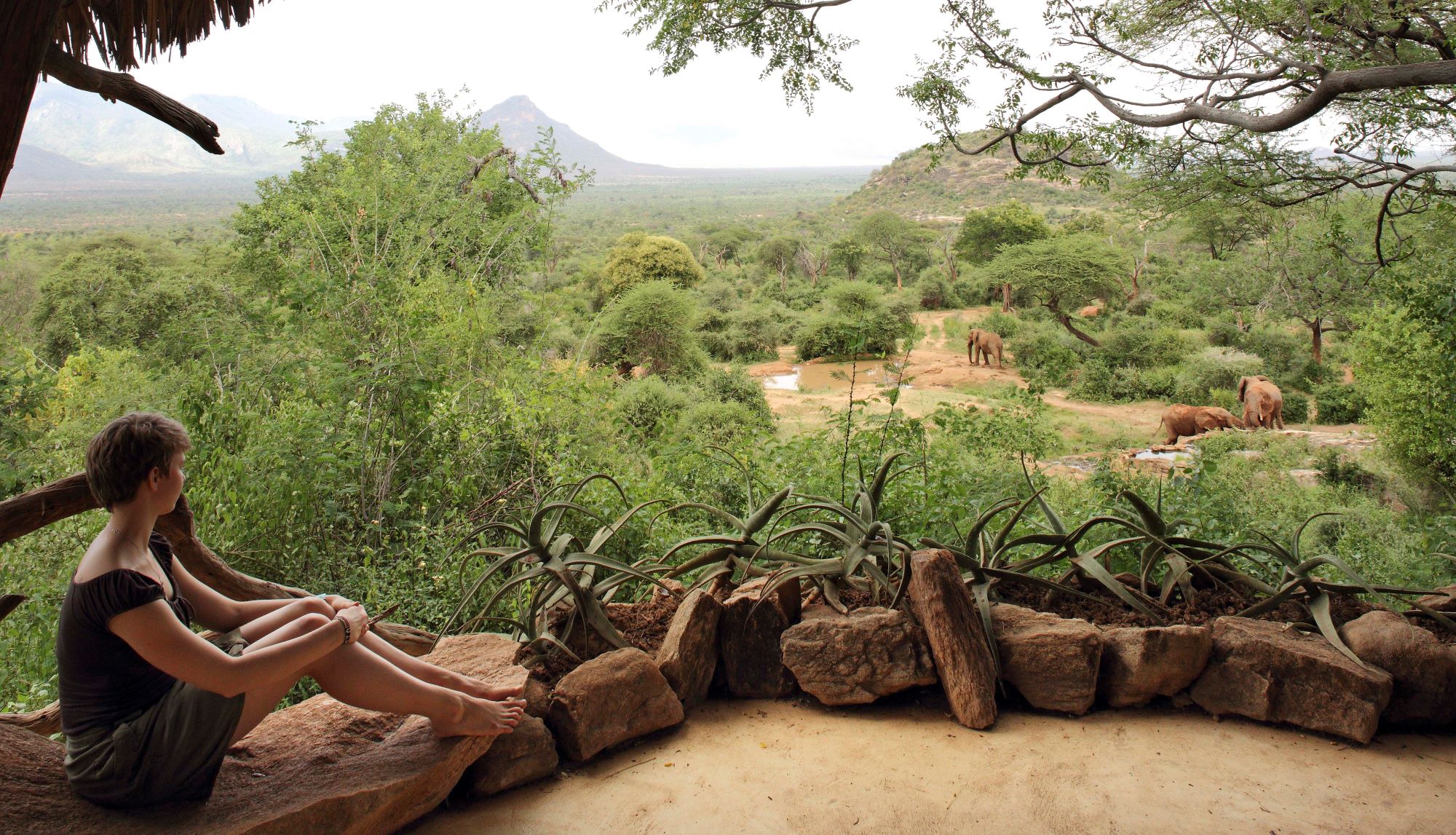
Impact
Conservation
The camp is powered by solar energy generated by several sets of solar panels. Fresh food is not kept in a refrigerator, but in a specially designed charcoal store. Twice a day the charcoal is soaked with water and evaporation keeps food at cellar temperatures. Bottles, glass, plastic and tins are all removed from Sarara and recycled.
Between 1977 and 1995, over 30,000 elephant and rhino were killed by poachers and with all the elephants gone, the Grevy zebras and reticulated giraffe went too. Set up in 1995, the Namunyak Wildlife Conservation Trust was established to bring peace to this troubled region.
Working with the indigenous Samburu people, the trust has changed the attitudes of the local communities towards wildlife and, most importantly, made the area safe from poachers. Now 4,000 elephants have returned to the Mathews range. And where there are elephants, the other animals know it is safe to go and they too are coming home.

